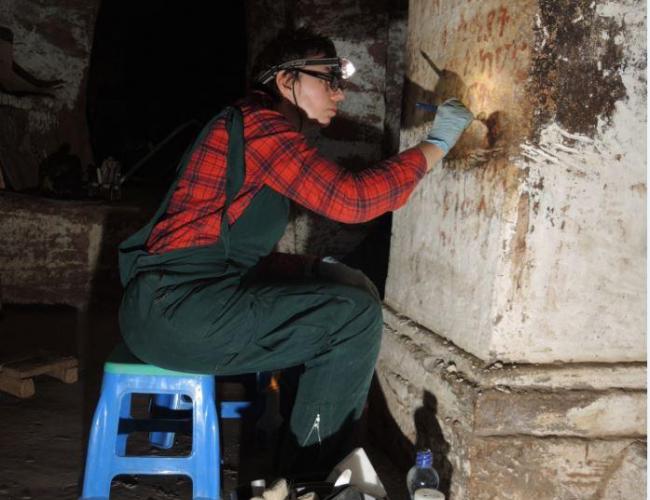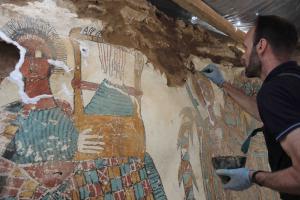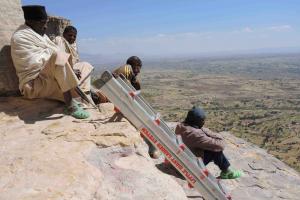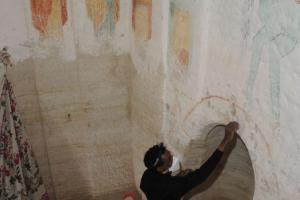In 2013, in collaboration with its Ethiopian partners and with the assistance of the Courtauld Institute, the EHF, carried out a survey of 9 painted churches in Tigray, Ethiopia. The purpose was to assess their condition and examine their materials and contaminants, to provide a basis for future conservation.
Tigray is home to some of the earliest and most important examples of ecclesiastical wall painting in Ethiopia. Surviving in both built and rock-cut churches, they are technically, stylistically, and iconographically rich and varied, but remain little known. They are executed directly onto the stone support, or onto gypsum, earthen or cloth secondary supports, using a wide range of painting materials, including expensive imported pigments. Paintings are vulnerable to geological issues, including rock falls induced by natural faults and earthquakes. Moisture ingress, salts, and macro- and micro-organisms are also major problems, exacerbated by neglect. In 2013, in collaboration with its Ethiopian partners and with the assistance of the Courtauld Institute, the EHF carried out a detailed survey of 9 painted churches, the first time this had been done in the region. Subsequently, a number of churches were identified for conservation work. In the last four years, projects have been completed at the rock-cut churches of Maryam Bahra and Abuna Daniel QorQor in the Gheralta region, both of which preserve medieval paintings. Components include not just remedial treatments such as essential stabilisation measures and careful cleaning, but also environmental monitoring and associated improvements, and efforts to promote sustainable tourism.








